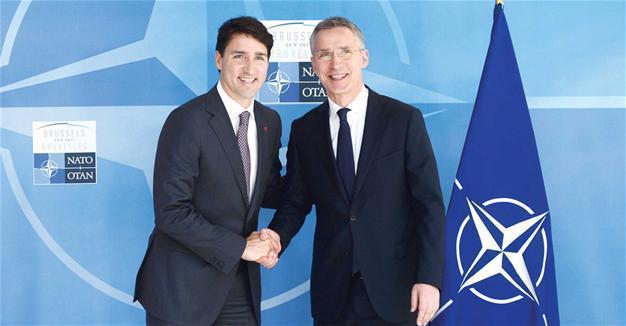NATO will join anti-ISIL coalition at Trump summit: Stoltenberg
 NATO will join the US-led coalition fighting Islamic State of Iraq and the Levnat (ISIL), alliance chief Jens Stoltenberg said on May , before a summit with President Donald Trump.
NATO will join the US-led coalition fighting Islamic State of Iraq and the Levnat (ISIL), alliance chief Jens Stoltenberg said on May , before a summit with President Donald Trump.“This will send a strong political message of NATO’s commitment to the fight against terrorism,” Stoltenberg said.
He stressed this did not involve NATO taking on a combat role in the fight against ISIL and other jihadist terror groups in Syria and Iraq.
All 28 allies have individually joined the anti-ISIL coalition of more than 60 countries, but NATO as an institution has not followed suit until now despite intense pressure from Washington.
Diplomatic sources say some member states such as France, Germany and Italy had opposed such a move for fear the alliance would be dragged into a ground war and risk relations with Arab powers.
NATO sources told Agnece France-Presse on May 24 that those reservations had now been overcome.
Stoltenberg said NATO would expand the role of its AWACS surveillance planes in supporting anti-IS operations and step up its training programmes in Iraq.
A special cell would be set up at NATO headquarters in Brussels to coordinate anti-terror intelligence and planning, he said. He said the allies would also meet European Council President Donald Tusk’s demands to share more of the security burden and reaffirm a commitment to spend two percent of annual GDP on defense
Meanwhile, the Syrian army said it had retaken a swathe of territory from ISIL in southern Syria on May 25 in a rapid advance near areas held by U.S.-backed Syrian rebels at the border with Jordan and Iraq.
The Syrian government said earlier in May that it was a priority to recapture the sparsely populated region known as the Badia where U.S.-backed Syrian rebels seized a vast expanse of territory from ISIL in March.
Tensions flared in the southern region last week when the U.S.-led coalition mounted an air strike against pro-government forces that U.S. officials said posed a threat to U.S. and U.S.-backed Syrian fighters in the area. Washington described the forces as Iranian-directed.
The Syrian army declared on May 25 the capture of areas to the south of Palmyra and to the east of Qaryatayn in southeastern Homs province. State TV showed footage of military vehicles including tanks driving through a desert landscape.
A military source told state news agency SANA that dozens of Islamic State fighters had been killed in the operation that resulted in the destruction of large quantities of weapons and ammunition and followed gains in the same area 48 hours earlier.
The advance by the U.S.-backed rebels into the Badia in March was assisted by ISIL’s retreat to other parts of Syria, where the group is facing separate offensives by U.S.-backed forces and the Russian-backed Syrian army and its allies.
The coalition has been training the rebels to fight ISIL at a garrison in al-Tanf, a strategically vital location at the intersection of the Jordanian, Iraqi and Syrian borders.
















